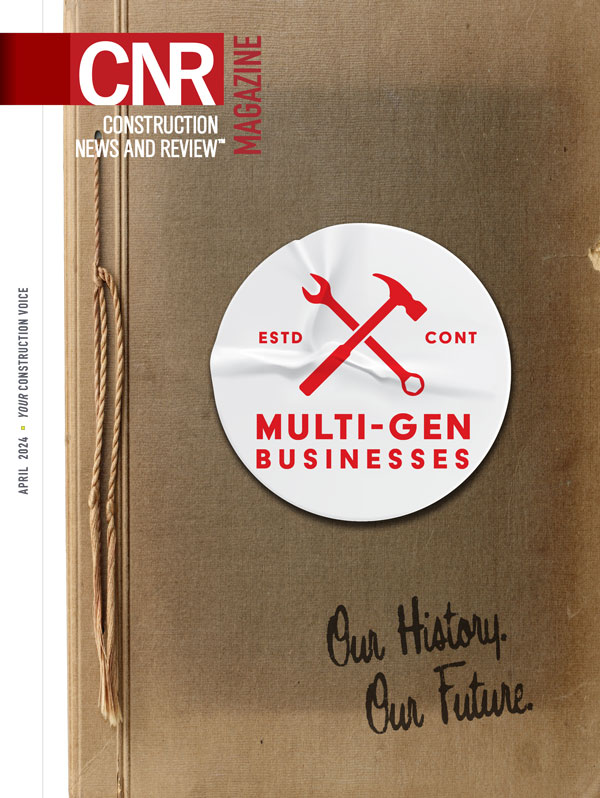Decarbonizing Commercial Real Estate
By ROBERT BERNARD
The Pressure Is On
The effects of climate change are becoming clear, and people are demanding that businesses play an active role in reducing their carbon footprint.
Consumers are now prioritizing environmentally conscious brands. Employees seem more likely to accept jobs from sustainably-aware employers. Many governments are making carbon-reduction commitments.
Decarbonizing will require clear strategies, targets and roadmaps.
The Time is Now
Over the coming decade, companies are preparing for significant changes. More than 450 firms have committed $130 trillion to achieving net zero through the Glasgow Financial Alliance for Net Zero. These commitments include decarbonizing global assets over the next 30 years.
However, the issue’s scale cannot be underestimated. According to the Carbon Risk Real Estate Monitor and the Global Real Estate Sustainability Benchmark, only 15 percent of global assets currently align with the Paris Agreement’s 1.5°C target. This means 37 percent of global buildings will need to be decarbonized by 2030, which presents a significant challenge for the real estate sector.
Every Company Needs an Actionable Decarbonization Strategy
Failure to drive decarbonization could soon become a business liability and contribute to global socio-economic and environmental risk.
It’s critical for every company to have a proactive decarbonization plan, made up of clear strategies and roadmaps that span operations, leasing and capital expenditure and have performance targets. Having a plan is the only way to manage up-front costs and regulation.
The Difference Between Net Zero and Carbon Neutral
Net zero is a strategy to reduce carbon emissions through efficiency, electrification and use of renewable energy.
Carbon neutrality is where a company commits to not increasing its carbon emissions and offsets the carbon it already emits.
Of CBRE Global Workplace Solutions’ 150 enterprise clients, fewer than half have published strategies in place to meet their carbon reduction goals. This isn’t surprising. Creating a real estate decarbonization strategy that includes management, finance, operations and decision-making can feel overwhelming.
Yet, delaying action can lead to significant business risk. And of course, the threat to global economies, societies and the environment looms.
Plan your decarbonization strategy.
Establish Your Decarbonization Strategy
To start, you must understand how much carbon you’re emitting – and from where. Only when you have this information can you set goals, identify opportunities and develop a strategy. Start planning with these steps:
- Build a team
- Understand your carbon footprint and associated risks
- Set targets
- Develop strategy and tactics
- Publish targets and strategy
- Report and monitor
- Provide internal incentives
Build a Team and Engage Stakeholders
Decarbonization affects every area of the business. Bringing stakeholders together is a must. Climate affects every job, and siloed approaches won’t work. All stakeholders in corporate real estate and the C-suite should be engaged and aligned in an approach that’s both top-down and bottom-up.
Understand Your Carbon Footprint and Associated Risks
Identify the type and source of data needed to establish a baseline inventory for greenhouse gas emissions.
- Review your carbon emissions data and boundaries for GHG emissions: Are there any gaps?
- Carry out decarbonization audits at your sites and evaluate space utilization within the portfolio. Data from these audits and assessments will provide meaningful insights into how you prioritize decarbonization decisions, site by site. It will also help you to verify data you collate from across the business.
- Make sure your technology architecture is robust enough to produce financial-grade, auditable data. This will be vital for compliance, reporting and keeping your organization on track. Ideally, you will be able to produce data visualizations to help stakeholders understand the progress you’re making towards your goals.
- Carry out risk vs. return analysis. Start in the early stages of planning and continue on a regular basis. Carbon removal must be seen as equal to all other financial-model risk factors. So think about the financial, operational and reputational risks of not achieving your decarbonization targets. Then decide the financial investment needed to mitigate them.
- Review your portfolio strategy and its alignment with climate goals. Are you in the right markets? Do you occupy the right square footage?
Set Targets
You can’t change what you don’t track. So set objectives that are aligned to your company’s ambitions, as well as external, standard frameworks. We recommend aligning or certifying your targets to The Science Based Targets initiative. Then use your goals to inform activities and measure what you achieve.
Absolute and intensity targets are both ways to measure a company’s progress towards reducing GHG emissions. An absolute target is one that aims to reduce GHG emissions by a set amount in relation to the total being emitted. For example, to reduce emissions by 45 percent by 2030.
An intensity target is a normalized metric that sets an emissions target relative to an economic or operational variable. For example, revenue or number of employees. This allows for a business to set emissions reduction targets while taking into consideration economic growth.
While an absolute reduction is the ultimate end goal, businesses should also consider intensity targets as they balance energy demands associated with growth and cutting overall emissions.
Develop Strategy and Tactics
With a clear understanding of your GHG inventory and high impact opportunity areas, you can begin your decarbonization roadmap. Our approach is based on the carbon-management hierarchy, often described as “reduce what you can, offset what you can’t.”
Publish Your Targets and Strategy
Companies can participate in sustainability regimes by voluntarily disclosing their targets. Each regime gives corporations an opportunity to set out their sustainability ambitions.
Report and Monitor
Companies are already required to comply with local, regional and national legislation such as New York City’s LL97, Boston’s BERDO, Singapore’s CPA and the EU’s EED. These are all current examples of laws that require companies to demonstrate compliance. In our view, environmental compliance is likely to become increasingly demanding and complex.
Provide Internal Incentives
Outline Key Performance Indicators and be clear about monitoring responsibilities so that internal stakeholders can drive results toward your goals. Set internal milestones and make sure all processes are transparent.
From a net zero roadmap to a green leasing strategy, create an approach that reflects your organizations’ environmental sustainability ambitions.
Robert Bernard is chief sustainability officer at CBRE.
Fresh Content
Direct to Your Inbox

YOUR CONSTRUCTION VOICE IN ST. LOUIS AND BEYOND
Join CNR Magazine today as a Content Partner
As a CNR Content Partner, CNR Magazine promises to support you as you build, design and engineer projects not only in and around St. Louis, but also across the U.S. CNR is equipped and ready to deliver a dynamic digital experience paired with the top-notch, robust print coverage for which you’ve always known and respected the magazine.




